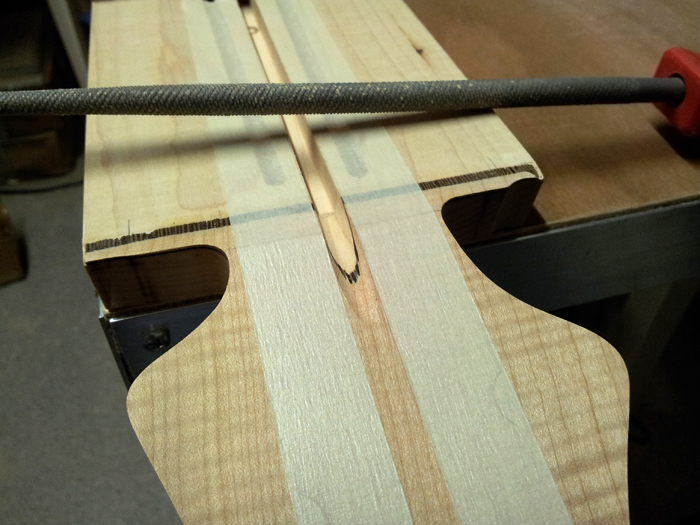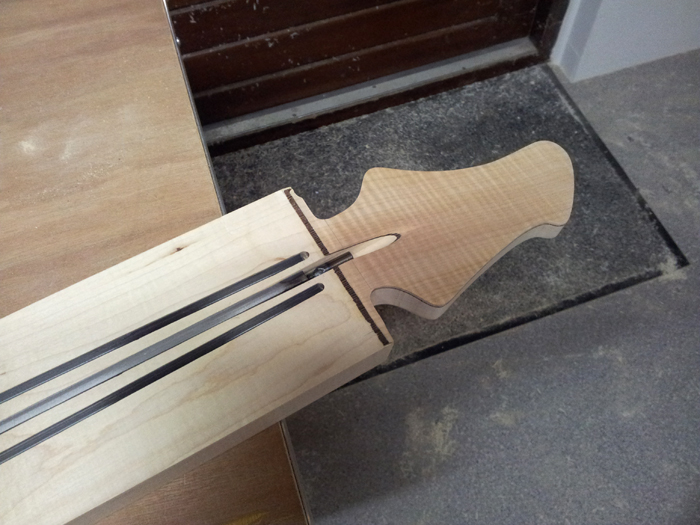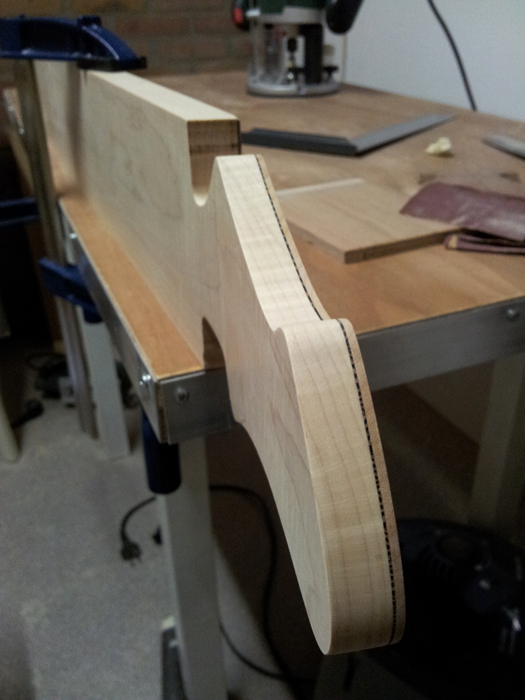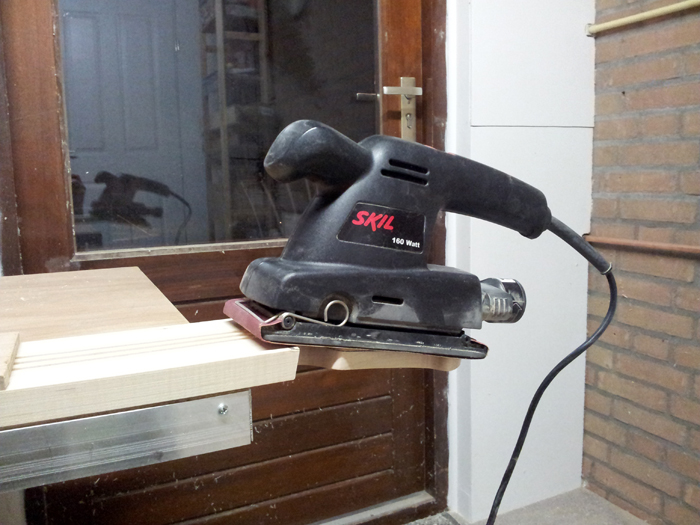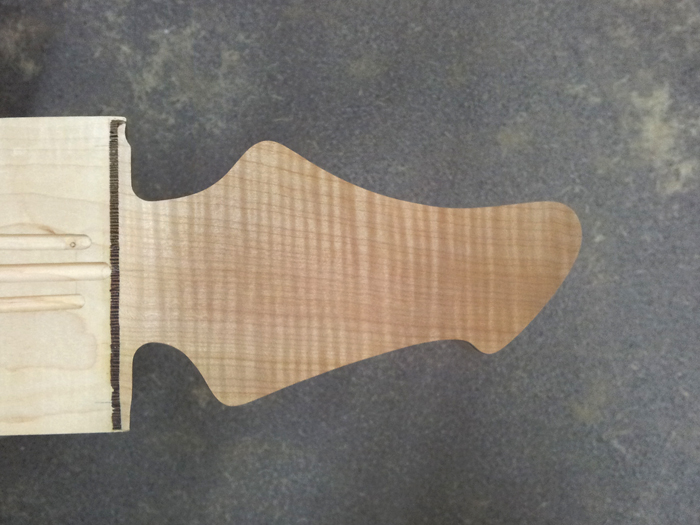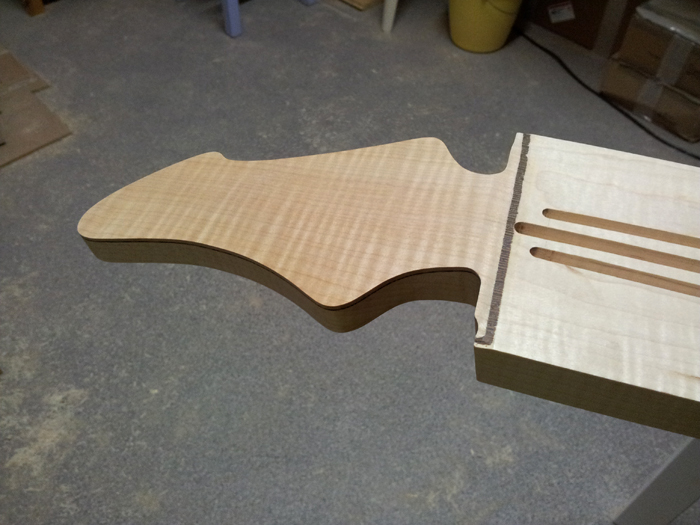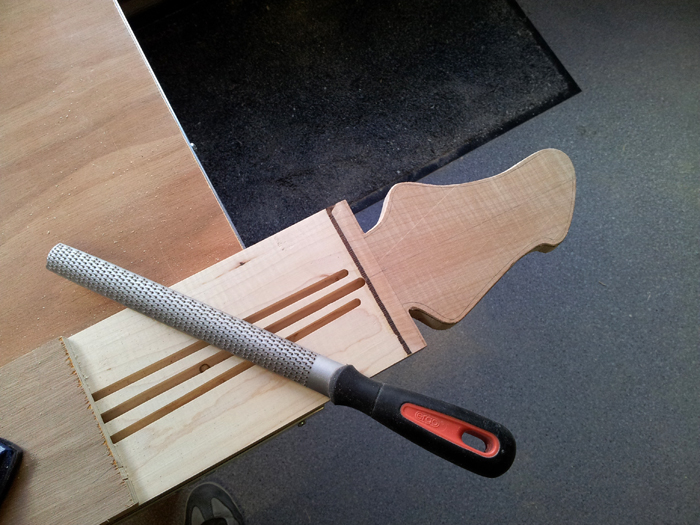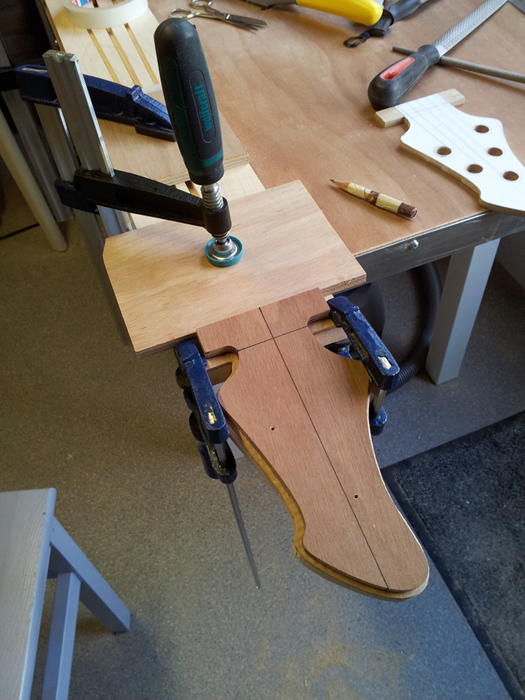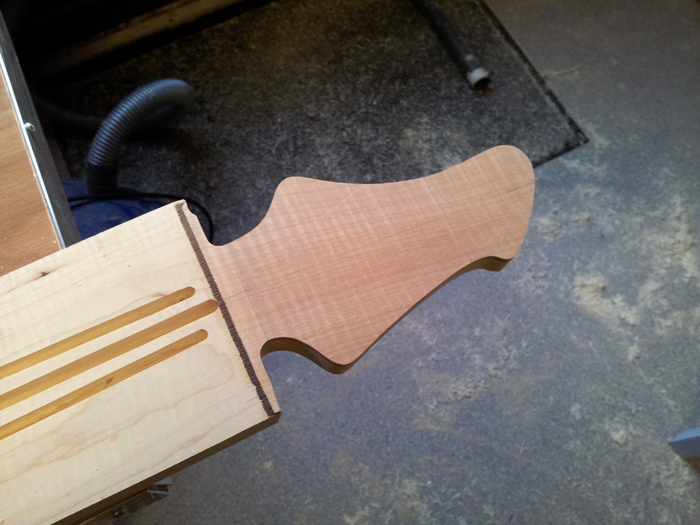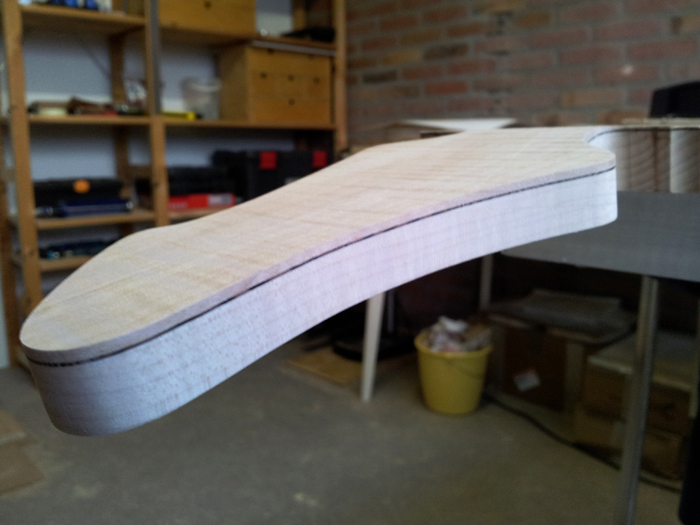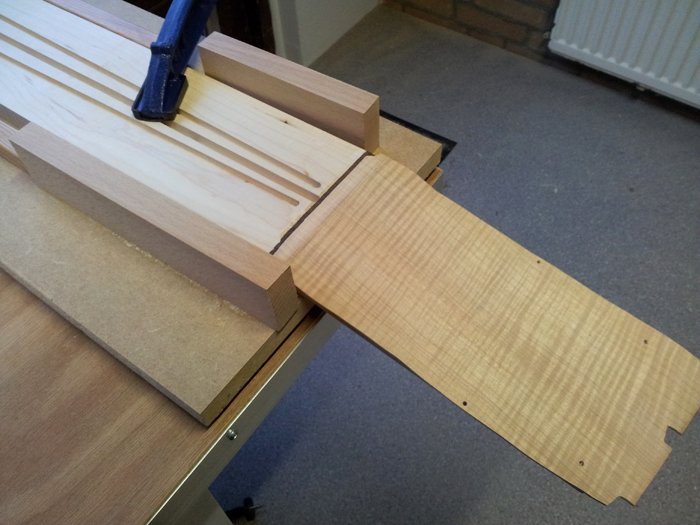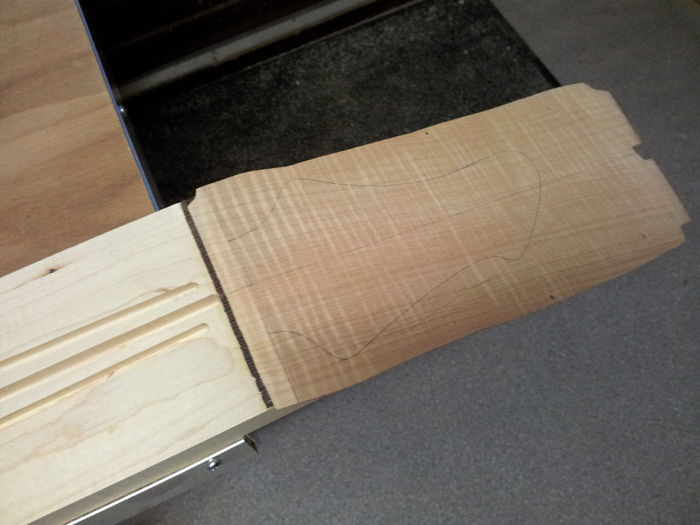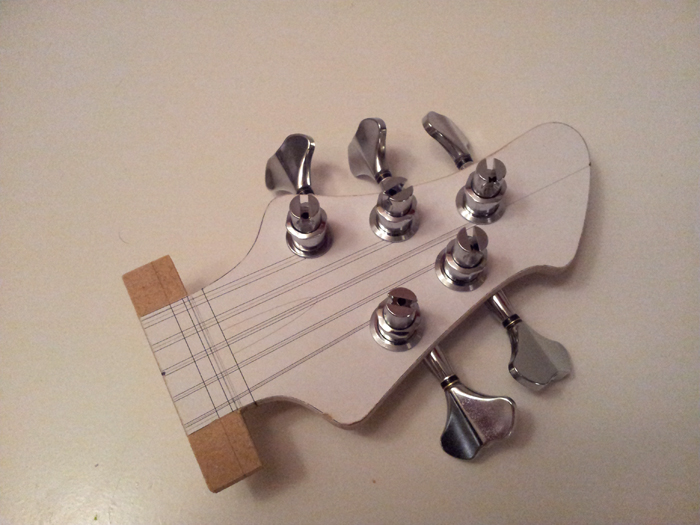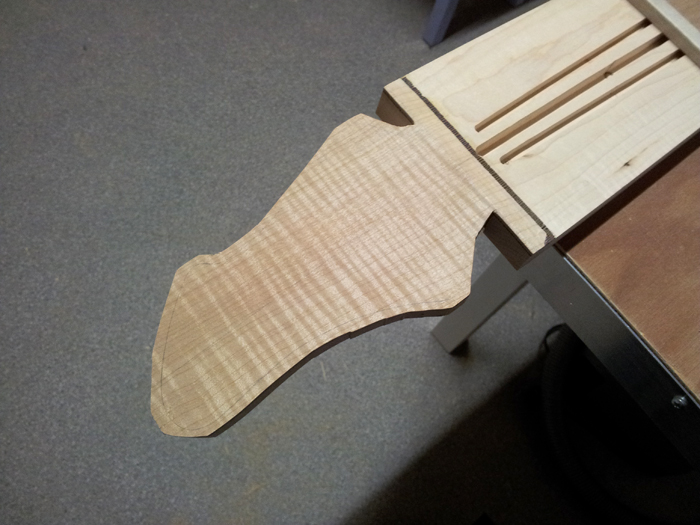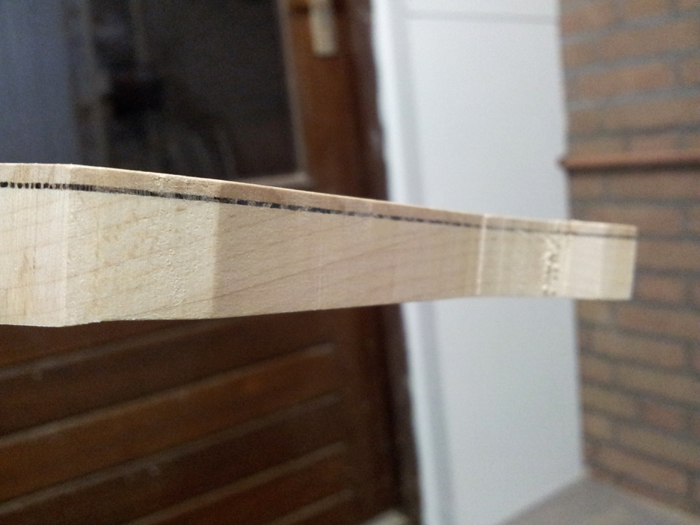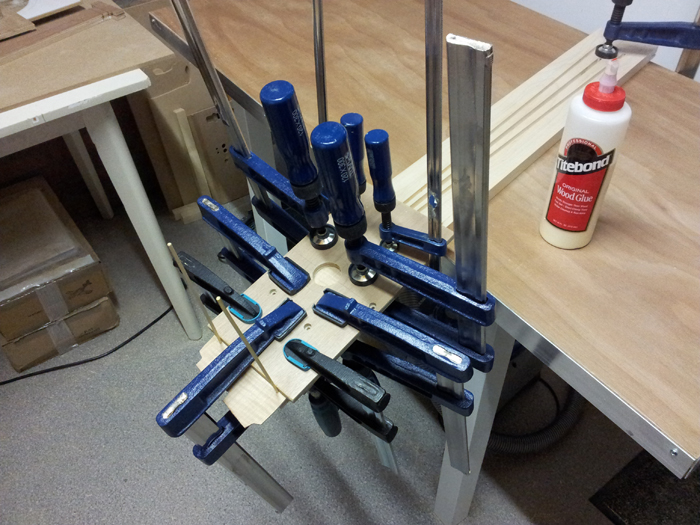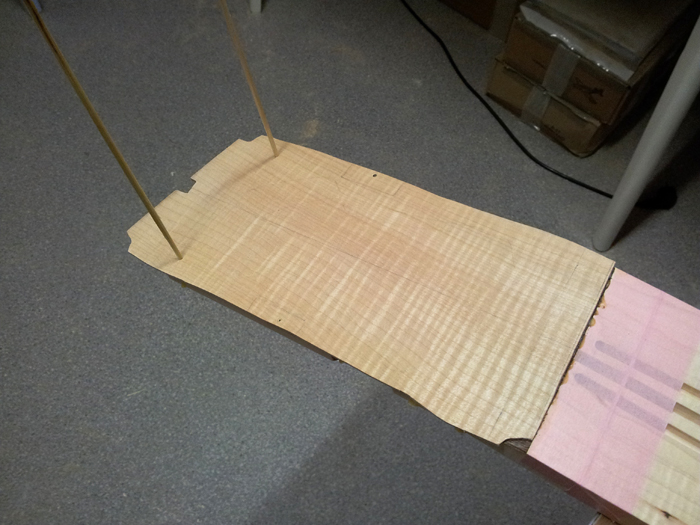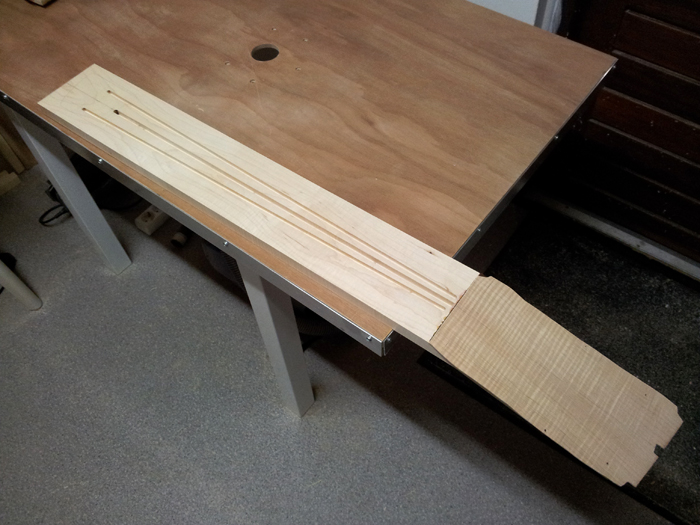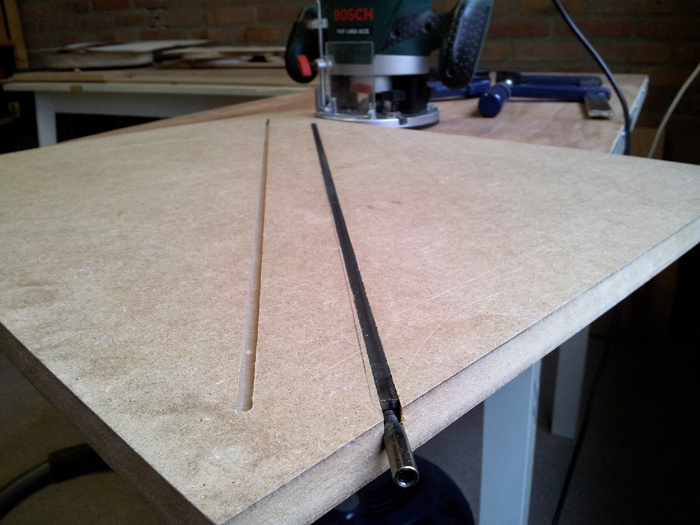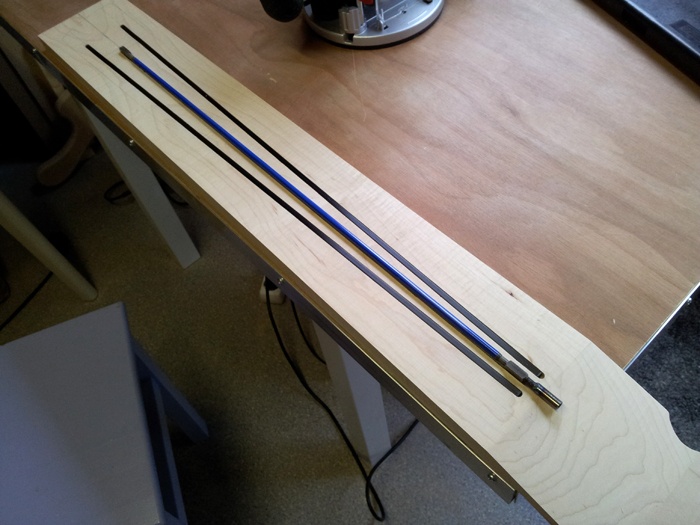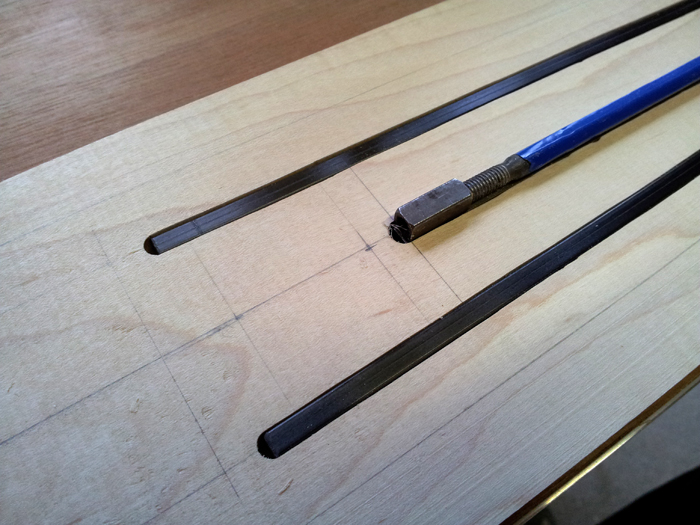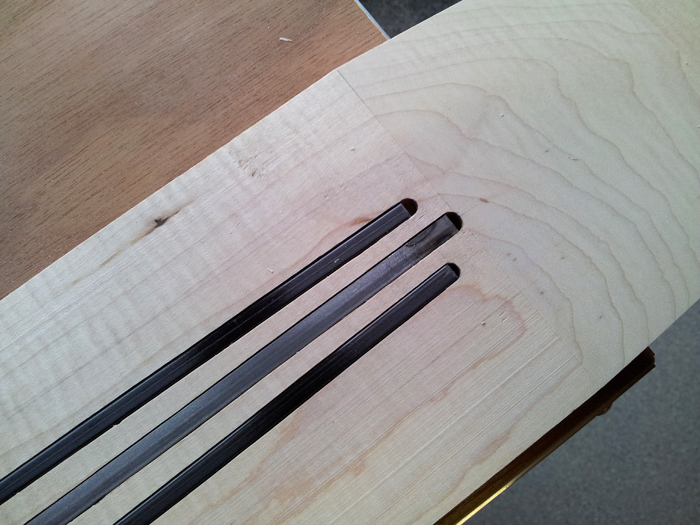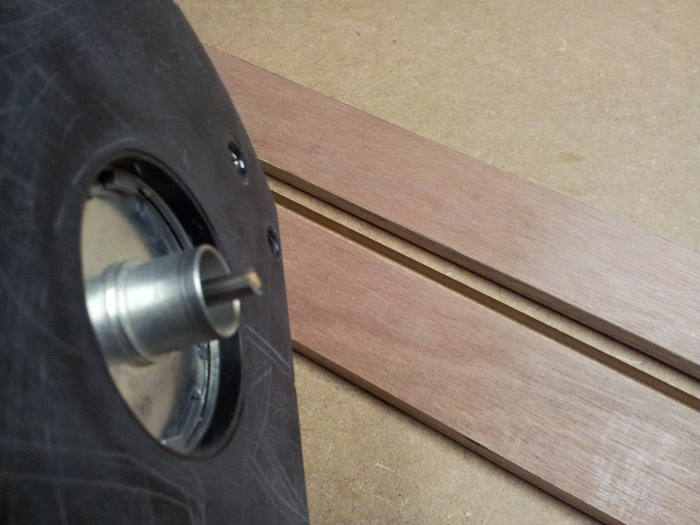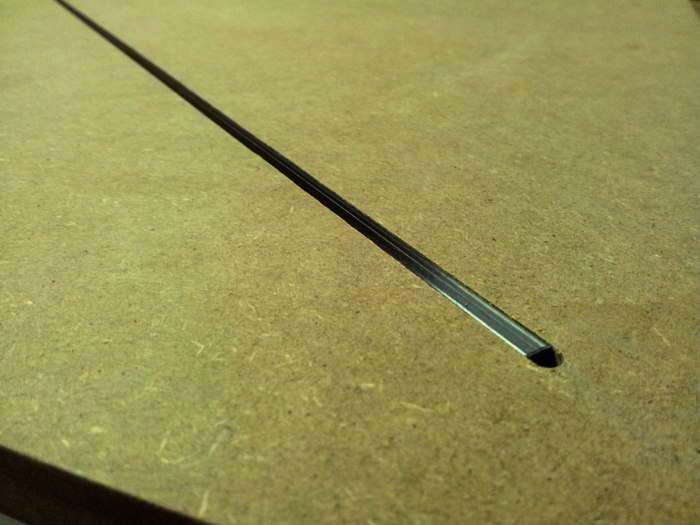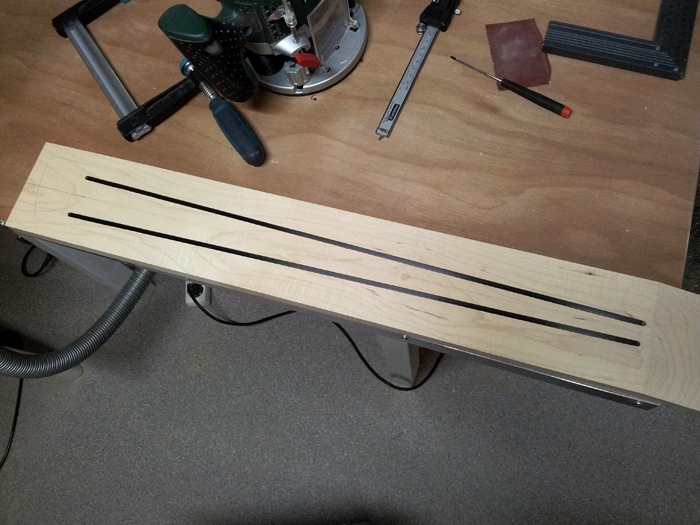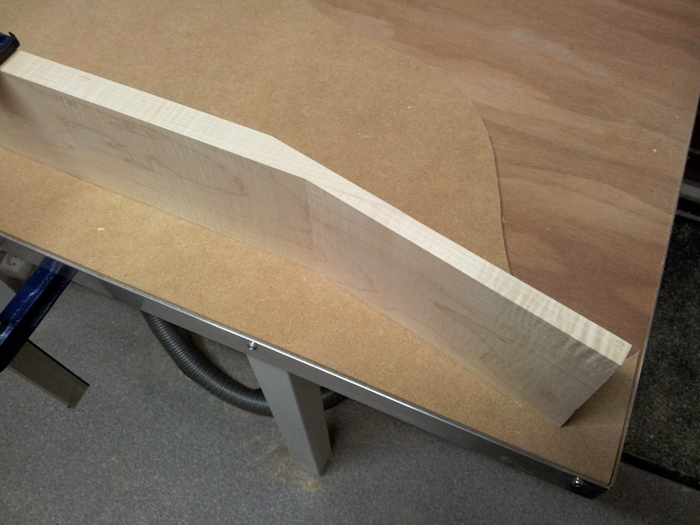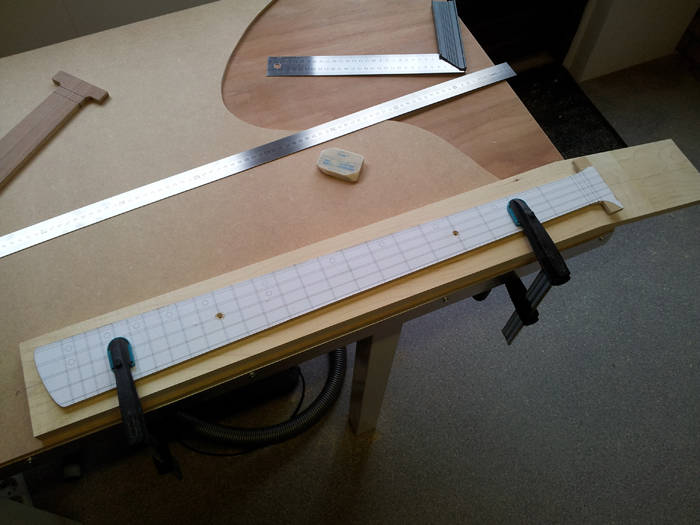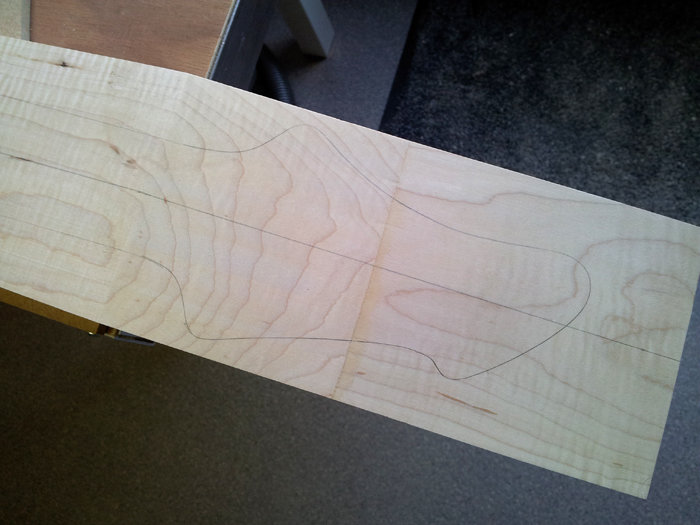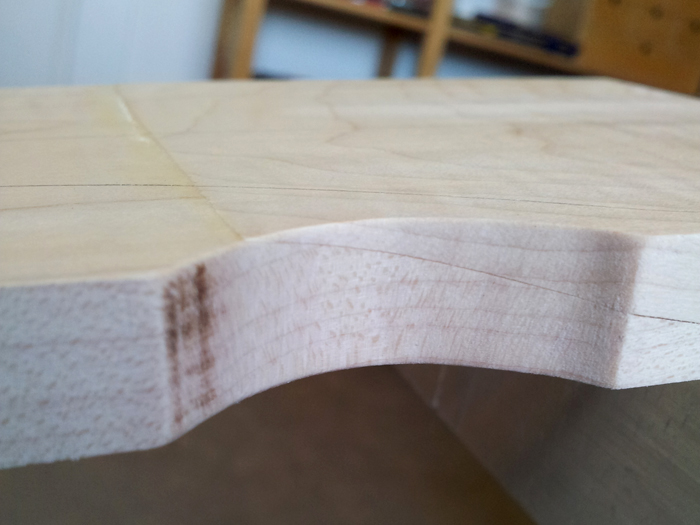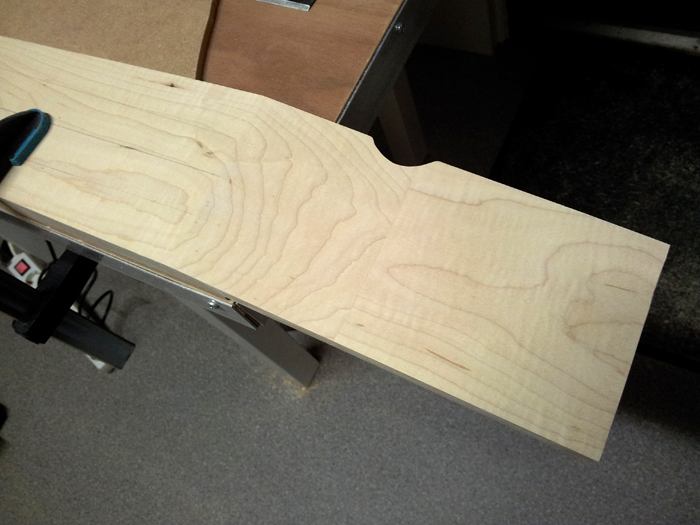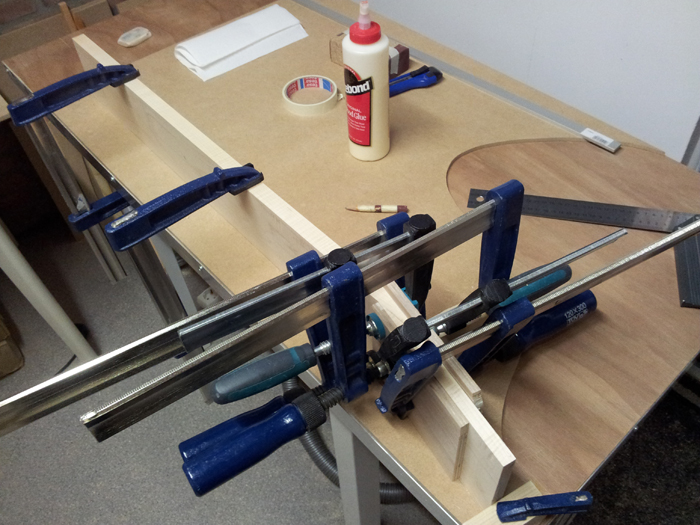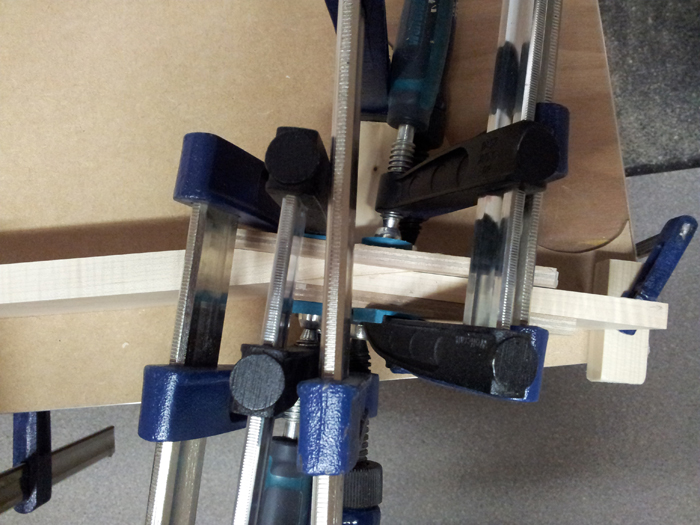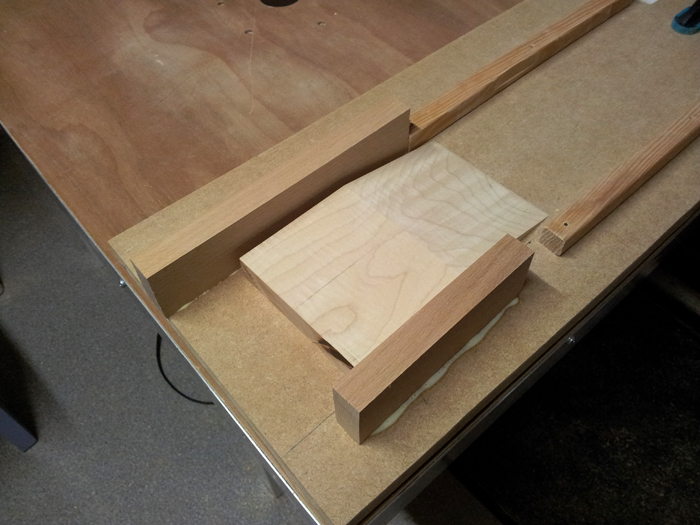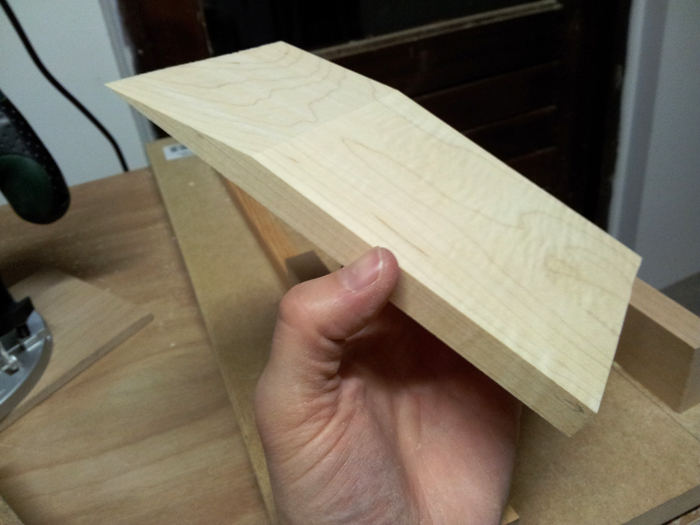Onto the truss rod adjustment nut access cavity… I didn’t route the channel all the way to the headstock, but stopped just before where the nut goes. Then, I use a round file (and a lot of patience) to create this cavity. It’s not quick, but it gives you a lot of control, which I like for such task (you don’t want to remove to much wood at this spot and the result has to look good as well). After a while:
It took me exactly one hour to get a good fit and a nice result:
I test fitted all three rods and I think it looks good, so it’s time to do some finishing touches on the channels and glue the rods in. But first, the test fit:
Next stressful job is glueing the rods in with slow curing epoxy. I will probably only glue the truss rod at the end. I could also not glue it in at all, so I will be able to pull it out one day, when it needs a truss rod fix. The channel is tight enough so I think it’s possible. Not sure though…

